Gold review
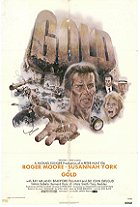 Posted : 7 years, 3 months ago on 28 August 2018 04:18
(A review of Gold)
Posted : 7 years, 3 months ago on 28 August 2018 04:18
(A review of Gold)Moore must have been a pretty busy man in this period as this was released just a year after his Bond debut in Live and Let Die and the same year as his second appearance as the secret agent in The Man with the Golden Gun. As Rod Slater he gets involved in the same sort of shenanigans as he does as Bond, he's somewhat of an action hero, has a romance subplot and appears in exotic locations in South Africa. They are somewhat less romanticised than the Bond settings, with much of the action taking place in and around a Gold Mine which is quite realistically portrayed.
Apparently the shoot was controversial at the time as South Africa was under the apartheid regime but the film is interesting in retrospect in terms of the story which clearly portrays the miners, who are nearly all black, as the victims of ruthless white capitalists who endanger their very lives in order to personally profit. Although Slater is clearly personally quite heroic, he is arguably outshone by the black miner 'Big King' who helps him out.
In conducting her romance with Slater, Terry Steyner, played by Susannah York has somewhat enigmatic motivations which give the character greater depth than the love interest of the Bond movies. I did feel this aspect of the script could have been developed a bit more, however.
Gold suffers from a somewhat plodding narrative and some scenes such as a long dance sequence with African performers feel like pure filler, although audiences at the time may have appreciated the somewhat National Geographic style sequence due to unfamiliarity with the setting. It does pick up towards the end, and as you would expect from people associated with the Bond franchise there are some pretty exciting action sequences which are set in the mine itself.
Overall, Gold is an interesting movie with respect to its left-leaning script, good performances throughout and unusual setting. Whilst other films have featured scenes set in mines they have usually been made on sound stages and Gold benefits a great deal from using an actual mine for shooting, which gives some scenes a feel of documentary realism. Whilst it isn't pure Gold it is certainly a fairly decent Silver.
 0 comments, Reply to this entry
0 comments, Reply to this entry
Ridiculous, but fun
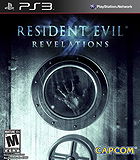 Posted : 9 years, 8 months ago on 18 March 2016 11:35
(A review of Resident Evil: Revelations)
Posted : 9 years, 8 months ago on 18 March 2016 11:35
(A review of Resident Evil: Revelations)This isn't really a bad thing. From the start of the game I found this to be pretty compelling to play. The storyline is completely ridiculous, as usual, but it's undeniably fun and it moves along at an impressive pace so that it never becomes dull. The gameplay is very much in the style of Resident Evil 5 with the characters being easier to control than the older RE efforts. The emphasis is firmly on action. Revelations never really tries to scare the player much but aims to offer exciting action and on this level the game is certainly successful. As with RE5 you are accompanied throughout by a companion which lessens the sense of isolation but ups the action quota, with both characters blazing away at whatever monstrosities the game throws at them. A selection of weaponry is available which offers a nice tactical element to play, as some weapons seem to be more effective against certain enemies or in particular situations. Also missing is the old inventory management system which is a boon in terms of keeping up the game's pace. You can carry anything you can come across with no problems (though there is a cap on maximum amounts) and you never have to mix up herbs to create a stronger concoction. There is only one type of herb this time and it heals all damage sustained. This time the game switches between various characters and times in the story which was an interesting and enjoyable innovation.
Most of the action takes place on an ocean liner but unfortunately the game never really fulfils the promise of this setting in the same way that the old PS2 title Cold Fear did. There are only a couple of moments where any attempt was made to portray the sensation of the boat rocking about in reaction to the movement of the sea which was disappointing. A later level also drew on disaster movies like The Poseidon Adventure but the results were less accomplished and striking than those achieved in a similar setting by Uncharted 3.
Presentation-wise Revelations was a pretty smart looking title. The character models are well realised and the settings are generally impressive with some nice lighting effects which added to the atmosphere. Sound design was also well crafted with each monster making a distinctive unpleasant moaning noise which helps the player to identify the source of a threat. The musical score was also accomplished and used a more cinematic style than the more off-kilter melodies of the original Resident Evil.
Once the campaign has been completed the usual New Game Plus option is on offer allowing you to keep weapons gained throughout play for a second run through, as well as the option to change your outfit if you so wish. This adds good replay value to a campaign of moderate length. You are also scored in ranking system on how well you did on each level, a spur to improving your performance which was a nice touch. In addition to the campaign Revelations also offers a Raid mode which takes sections of the campaign which you can play through either Solo or cooperatively online. This is as much fun as the campaign, offering plenty of options on characters with skills in certain areas and a multitude of weapons and modifications available. As with the campaign you are scored on your performance.
One RE tradition which makes a comeback is the hokey plot accompanied by wooden voice acting and terrible dialogue. Personally I find this to be all part of the entertainment and I was laughing out loud at such gems as 'these tentacles are really annoying'! The story doesn't really hold water in terms of logic but does work in terms of keeping you interested in how things will play out. This is a game where a shipwreck resting at the bottom of the sea still has a working electrical system and ocean liners have rooms which look like those from a mansion. If you embrace this ridiculous style then you will enjoy what the game has to offer.
Overall, Revelations is a pretty good RE title. If you disliked the more action oriented RE style since RE4 then this won't be to your taste as it isn't really a survival horror title any more. Otherwise I can highly recommend that you check this one out.
 0 comments, Reply to this entry
0 comments, Reply to this entry
I've been here before
 Posted : 10 years, 1 month ago on 5 November 2015 06:48
(A review of Spectre)
Posted : 10 years, 1 month ago on 5 November 2015 06:48
(A review of Spectre) 0 comments, Reply to this entry
0 comments, Reply to this entry
In Space No-One Can Hear You .. At All
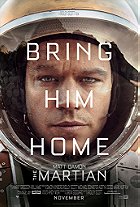 Posted : 10 years, 2 months ago on 6 October 2015 05:34
(A review of The Martian)
Posted : 10 years, 2 months ago on 6 October 2015 05:34
(A review of The Martian) 0 comments, Reply to this entry
0 comments, Reply to this entry
No legend, but no tragedy
 Posted : 10 years, 2 months ago on 29 September 2015 05:48
(A review of Legend)
Posted : 10 years, 2 months ago on 29 September 2015 05:48
(A review of Legend) 0 comments, Reply to this entry
0 comments, Reply to this entry
Low powered shooter
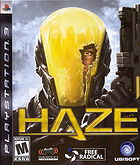 Posted : 10 years, 3 months ago on 31 August 2015 11:27
(A review of Haze)
Posted : 10 years, 3 months ago on 31 August 2015 11:27
(A review of Haze)The game certainly arrived on a tidal wave of hype from the publisher, who described it as a 'Halo beater'. Although it was not the first time that a new FPS had been compared to the classic Xbox franchise, I think it was a combination of the over the top publicity with the reputation of the developer, Free Radical, that led to it being seen as such a disappointment when finally released. Free Radical had previously been best known as the creators of the classic Playstation 2 series, Timesplitters, and some members of the team had worked on the legendary Nintendo 64 title Goldeneye 007. This obviously led to heightened expectations for their first game on what was a new platform at the time.
Essentially a fairly standard FPS, Haze did feature a few innovations. The game is set in the near future where national armies have been replaced by a private corporation called Mantel Global Industries, which is now tasked with all peacekeeping operations which would previously have been the remit of the UN. The player assumes the role of a Mantel soldier called Shane Carpenter whose squad has been assigned a mission to eliminate the leader of a guerrilla movement in South America who has been accused of war crimes such as ethnic cleansing. As well as using conventional weaponry Mantel soldiers are also issued with a performance enhancing drug called Nectar.
It is an interesting premise which gave the game the potential to explore themes including how profit motives affect warfare, could armies utilise pharmaceutical innovations to give them an edge in combat and so on. The storyline draws on various science fiction movies such as the Alien series (Mantel's logo is noticeably similar to the Weyland-Yutani corporation) and Starship Troopers (the influence of propaganda as a motivation for warriors). Unfortunately this potential was wasted due to poor scripting including dialogue which sounded like a first draft, and a storyline which although not bad was too superficial to explore any of the concepts introduced in any real depth. Another issue was the quality of the voice acting which although never sinking to the depths of the first Resident Evil game, isn't particularly accomplished either. At times it sounded like the cast had just been handed their lines and made to read them immediately. Haze really needed a high level of maturity and sophistication to pull of the type of story it was trying to relate but really failed in this area. A game with a similar narrative style was Far Cry 2 which was so much more succesful, benefitting from not only superior scripting but also far better performances from the voice cast. In Far Cry 2 the mysterious bad guy known as the Jackal was both brilliantly played and had wonderful dialogue; Haze's equivalent Merino was mediocre in both respects and so never became all that interesting.
Carpenter was a protagonist who was hard to relate to as well. Usually games take either the approach of a mute lead character or use one with a lot to say. The halfway between the two style employed here was not very effective. With Carpenter not saying much it was very hard to understand his motivation and consequently he did not seem a very believable character.
The gameplay was mostly not particularly different to any other FPS you might have played previously. The guns handle well enough with decent shooting mechanics as you would expect from the Timesplitters team, though the amount of recoil on some weapons is a little excessive. The arsenal is pretty much the standard selection of shotguns, sniper rifles etc. It would have been nice to see some innovations in this aspect of the game. Using the Nectar drug was fun, however as you do get a sense of power from it. The enhancements provided, including the ability to zoom in further with scoped weapons and highlighting enemies did make the game a little too easy when playing at standard difficulty setting.
Level designs were poorly implemented with some areas being ridiculously large for no apparent reason except maybe to make the game last a bit longer, and confusing layouts. It was often hard to tell where you were supposed to go next despite the use of direction markers. There was the odd vehicle section which did give the game some much needed variety. These parts worked well enough, but weren't actually as well done as their equivalents in the PS2 Red Faction games. Some, such as a scene where you control a helicopter's gun ended far too quickly, giving the impression that the game was rushed out. Occassionally the game has a go at a setpiece action scene, such as one where you are on a ship that rocks around as it comes under attack. It does show some evidence of ambition on the part of the developers but the results don't approach the quality of the Uncharted series, sadly.
The AI wasn't great either. Enemy soldiers showed virtually no sign of tactical awareness, preferring to stare at neighbouring walls at times rather than the direction of gunfire, and they don't favour using cover much either. Your fellow squad members make some attempt to help out but are similarly incompetent so aren't much use. You can revive them if they take too many hits but there really wasn't much advantage to be gained by doing so. They also seem to appear and disappear in a fairly random fashion, giving the impression that the game was never quite finished.
Graphically, Haze was completely unimpressive in general. Some of the design was not bad and the first sections in the jungle actually work quite well. There were a lot of problems however; interiors were very poor with extremely bland decoration, textures are mainly rather lo-res and the animations were stiff and unimpressive. It mostly was closer to a PS2 quality than you would expect.
Eventually the whole thing wraps up in an assault on a land carrier, which is like an aircraft carrier which travels on land rather than water. Surprisingly, this level was quite accomplished, combining an attack on the carrier from a moving vehicle then driving on to it before progressing through the carrier on foot. It is a shame that the quality achieved here was not matched elsewhere.
Haze also featured several multiplayer modes, including the option to play the campaign online with up to 3 other players, a novelty at the time and rarely done later. The competitive modes were also quite decent with good game balance and a neatly designed use of the abilities featured in the campaign. They aren't anything outstanding but are certainly worth a few hours of your time.
In conclusion Haze is by no means one of the worst games on the PS3. It had a few interesting innovations in fact, but the end result was just too mediocre to succeed. There are so many other FPSes available that a game needs to be really special to stand out; Haze lacks a unique selling point that would make you choose it rather than the other big hitters of the genre such as the Killzone, Resistance or Call of Duty series. A brave attempt at something a little different which didn't turn out as well as it could have done.
 0 comments, Reply to this entry
0 comments, Reply to this entry
Adjust your expectations
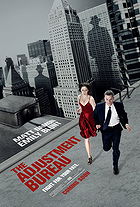 Posted : 10 years, 7 months ago on 9 May 2015 10:23
(A review of The Adjustment Bureau)
Posted : 10 years, 7 months ago on 9 May 2015 10:23
(A review of The Adjustment Bureau)This is definitely a movie for those who believe in love at first sight as politician David Norris, played by Matt Damon, is absolutely besotted with Elise Sellas (Emily Blunt) from their very first meeting. Damon gives a finely crafted performance which channels the oratory skills of John F Kennedy and the charisma of Bill Clinton. Blunt was quite charming which meant that you could believe that Norris would fall for Emily, though the speed at which this occurs was unrealistic and the script would have benefitted from some additional scenes showing how their relationship developed.
Naturally this being a thriller the path to true love is not smooth and the couple soon find their lives disrupted by the mysterious men of the Bureau, a collective of men in suits. It seems that a love affair would be detrimental to the development of Norris's political career so must be ended. Whilst it is an interesting notion that those with successful careers are loveless the film does not explore the concept in any depth at all, unfortunately.
There are indeed some interesting philosophical issues raised by the story such as whether there is free will or predestination, should we prioritise career or personal life, are there unseen aspects of reality which we are unable to perceive, but it soon becomes obvious that this isn't a movie which wants to ponder over any of these issues, preferring to indulge in many chase scenes which soon become monotonous. The narrative was somewhat plodding and culminates in an unsatisfying deus ex machina which didn't really make much sense in light of previous events.
There were also some really clunky scenes which made the movie rather unbelievable. In the scene where Norris improvised his speech, revealing the artifice of his public presentation, none of his team were unhappy with this turn of events which was just weird. No-one bats an eyelid at someone ordering water in a bar (perhaps this is an alternative reality where prohibition never ended). Worst of all was when a pedestrian was struck by a vehicle and flew through the air, yet said was he ok! You would have thought that someone would have called for an ambulance or something, though this being the USA they might have checked his bank balance first.
This was a movie that didn't really do anything that hasn't been seen before with elements reminiscent of various other science fiction films such as Dark City, Minority Report and The Matrix. It was nice to look at with good use made of the New York setting, if not particularly innovative. The score was somewhat intrusive, serving to overwhelm the action rather than underpin it.
Overall this was moderately entertaining, but the combination of romance and science fiction resulted in a work which was not truly satisfying in either genre, as each only received a superficial treatment. The cast made for a passable way to spend your time but the film did not fulfil its potential.
 0 comments, Reply to this entry
0 comments, Reply to this entry
The American Dream?
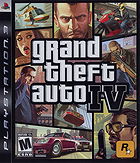 Posted : 10 years, 7 months ago on 22 April 2015 06:45
(A review of Grand Theft Auto IV)
Posted : 10 years, 7 months ago on 22 April 2015 06:45
(A review of Grand Theft Auto IV)This time the story is a lot more serious than before and the narrative is much stronger; in place of a slightly random collection of characters and missions there are inter-related episodes and the characters you encounter will at times pass comment on your actions and who you have been hanging out with which made the whole thing feel much more realistic. The storyline tackles some interesting themes such as whether it is wise to seek revenge, can an immigrant create a new life for themselves or will they be burdened by the past and how people can see the world differently on account of their personalities. A big change to the more cartoonish style of previous GTAs.
Indeed, realism has been enhanced in many aspects of the game. GTA III was an impressive achievement at the time but this expands on it in so many ways. In place of an elevated rail system with a few stations there is an integrated overhead rail and subway system with several lines and dozens of stations. When travelling on the system you even get recorded announcements for each station. You can also get around town by taking taxi rides (as long as you have the money); doing so allows you to watch the city go by or you can just skip straight to the destination. The fast food outlets and clothes shops return from San Andreas as does the dating. These elements work in pretty much the same way as before though I did miss the fluctuating waistline element from SA which was pretty entertaining. As before there is a large range of cars and motorcycles in the city but their physics have been upgraded a bit, making them a bit trickier to control at first. You can actually cause a vehicle to spin out this time but it doesn't take too much time to get used to this.
The best thing about the game for me was Liberty City itself. It is just amazing. Each neighborhood has its own distinctive character such as one area which has many Korean-owned businesses indicated by bi-lingual signage. The attention to detail is fantastic: smoke stacks in industrial areas puff out smoke into the atmosphere, skyscrapers are floodlit at night, traffic lights sway in the breeze. Driving around town is a pleasure and the landscapes are so varied that it never feels repetitive.
The downside of all this is that the amount of detail used makes the city difficult to render resulting in noticeable pop-up, blurry backgrounds with greater distance and a slight jerkiness to the game engine. These aren't a huge problem by any means but they do detract from the experience a little. A bigger weakness is some of the missions. There were some strong ones but a fair number revolve around driving to a destination and shooting a bunch of guys which was a little monotonous at times. Rockstar have added a useful cover system which was a nice touch but that old bugbear a flaky auto-targetting system made an unfortunate return. To be fair it works reasonably well most of the time but still decides to lock on to a guy about a block away instead of the one right next to you on occasion which was irritating. It is disappointing that this long term problem of the series was not fully resolved.
You might be wondering where the laughs and silliness have gone. Don't worry, there are plenty of comic touches throughout the game. Nico has a dry sense of humour which is especially noticeable in scenes with his naive but optimistic cousin Roman which are at times hilarious. There are also the typically ridiculous radio stations, amusing comic characters like Brucie and the usual silly puns which can be seen in signs across the city.
GTA IV is very much evolutionary rather than revolutionary so if you hate the GTA series then this is unlikely to convert you. Everyone else should definitely consider playing one of the best games of its type to date. Although it has a few flaws they don't significantly detract from the overall experience of what is a very accomplished game.
 0 comments, Reply to this entry
0 comments, Reply to this entry
Thriller in Manila?
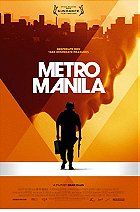 Posted : 10 years, 7 months ago on 12 April 2015 05:50
(A review of Metro Manila)
Posted : 10 years, 7 months ago on 12 April 2015 05:50
(A review of Metro Manila)The film began quite slowly which brought across the pace of rural life. In contrast, once the Ramirez family have arrived in Manila a combination of hand held shooting and fast jump cutting effectively convey the chaotic nature of a fast developing metropolis. These scenes seemed to be aiming for a documentary-style realism which gave the feel of a Phillipines version of Salaam Bombay. The emphasis was very much on social commentary, showing how naive migrants are taken advantage of by unscrupulous citizens.
The protagonists soon find themselves in a depressing slum area and in urgent need of money to survive. Mai resorts to working as an exotic dancer in a sleazy bar whilst her husband Oscar seems to have struck lucky by finding a role as a security guard for a company which transports money around the city in armoured cars. The style of the movie changes here to become a fairly standard heist film and though engaging enough the plot was not particularly surprising. Apart from the unusual setting it was very much like other products of the genre.
The cast were generally quite impressive and there was good chemistry between Jake Macapagal as Oscar Ramirez and John Arcilla who played his boss Douglas Ong. Althea Vega as Oscar's wife Mai looked the part but her performance was a little flat in some scenes where dramatic events took place which should have resulted in a stronger emotional reaction. The supporting cast were also effective though I found the playboy who styled himself after American rappers completely unconvincing, though this was as much the fault of the script as anything else.
The film suffered from being a little overlong with a subplot about a plane hijack which could have been easily excised as it was not really relevant and just served to slow down the pace of the principal narrative. In contrast the plot strand about Mai's work in the sex industry felt very much underdeveloped. Stronger plotting and dialogue here would have helped to make it an important part of the drama, rather than just being needlessly voyeuristic. It would also have been better if Oscar had been shown to be struggling with a moral dilemma concerning his actions which would have been more believable.
Despite its flaws Metro Manila is worth seeing on account of the distinctive setting which is nicely shot. It isn't a classic by any means but is certainly worth a look.
 0 comments, Reply to this entry
0 comments, Reply to this entry
Grim tale of post-war London
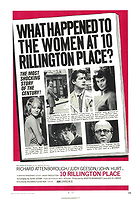 Posted : 10 years, 8 months ago on 1 April 2015 05:51
(A review of 10 Rillington Place)
Posted : 10 years, 8 months ago on 1 April 2015 05:51
(A review of 10 Rillington Place)The film has an authentic feel, being filmed in part in the actual street where the events portrayed took place though it was actually no 7 that was used as the occupants of no 10 were unwilling to move out during the production period. Despite the fact that it was made in the early 70s the impression is given that the area had not changed much over the years, having an extremely drab look and desolate atmosphere.
Into this area come the hapless fantasist Timothy Evans played by John Hurt and his likeable partner Beryl (Judy Geeson). They rent out a cheap, tatty apartment from the landlord John Christie which proves to be an unfortunate choice. Hurt does well with the Welsh accent and Evans emerges as an impressively rounded character, annoying at times yet also inspiring pathos elsewhere. His fantasising and outright lies are irritating yet he is also naive and at times easily manipulated. Beryl is a less complex personality, but sympathetically portrayed by Geeson.
British character actor Richard Attenborough took on the Christie role and gave a performance of impressive restraint and control. Apparently the real life Christie was extremely softly spoken and Attenborough was faithful to this. Christie never raises his voice yet is extremely sinister, seeming to relish the control he can gain over others. The cramped environs of the flats have a claustrophobic feel to them which gave the whole thing an oppressive, stifling mood. In some scenes Christie is shot in partial shadow, a nice touch of film noir stylistically.
The action eventually leads to a mishandled court case, a travesty of justice which is followed by a discovery which shed new light on the preceding events.
Based on Ludovic Kennedy's non-fiction account of the same title, 10 Rillington Place sensitively portrays some grim events and aims for historical accuracy rather than sensationalism. There was one part of the plot which was based on supposition rather than hard evidence but this otherwise seemed to stick very closely to the facts. Attenborough was truly memorable as Christie, amazingly cold and ruthless. For me the film's only flaw was that it does not explore Christie's early life very much so there wasn't a substantial amount of explanation for his perverse crimes. In every other respect this was extremely impressive and strangely overlooked.
 0 comments, Reply to this entry
0 comments, Reply to this entry
 Login
Login
 Home
Home 6 Lists
6 Lists 21 Reviews
21 Reviews Collections
Collections